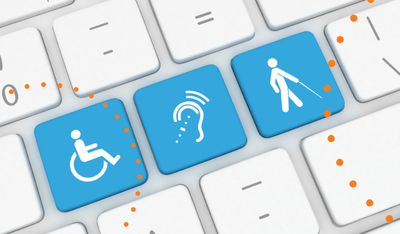What is an online town hall?
As government agencies and municipalities continue to adopt community engagement tools, typical approaches to community outreach and public participation are being augmented. While community engagement efforts in the past mostly focused on manual processes and in-person communication, technology is making these efforts more efficient, targeted, and scalable.
The town hall has always been a hallmark of civic engagement – and also a common pain point for agency staff. In-person meetings, town halls, and workshops are one of the most direct ways for the government to interact with citizens and for residents to give public input. Could technology take away this human touch?
While an “online town hall” (or “virtual town hall”) may give the impression that the traditional town hall is being replaced, this is often not the case. Online town halls are not meant to replace in-person meetings, but rather to enhance them.
An online town hall is typically some kind of in-person meeting which utilizes technology to better document attendance and participation. This is one element of a cohesive community engaged strategy: combining online and offline community engagement efforts.
How online town halls combine online and offline community engagement

The purpose of town halls and public meetings is to hear directly from residents, in person. Virtual town halls still allow for this to happen while using technology to make them more engaging or to provide other opportunities for engaging.
Let’s say you are a resident of a town, civically-minded, comfortable with technology but definitely not a computer wiz. Arriving at a meeting you might notice two options for signing in: a physical sign-in sheet as well as an iPad on a kiosk. You might then sit down and listen to a couple of speakers present on an issue, one with a PowerPoint, another showing a short documentary-style interview.
Afterwards, the moderator might show some basic audience questions on the issue at hand asking residents to weigh in with their smart phones or by text, with the results showing up instantly. With this general consensus, presenters can speak more to the sentiment in the room. Likewise, these same rankings might be used to prioritize topics to address, starting with the most pressing issue.
As the presenters continue to speak, residents might submit live comments – which are then parceled out by a moderator. The floor could then be opened to questions: both those collected during the talk and to those who prefer to ask their question by walking up to the microphone.
Residents could also take surveys on community issues at these in-person meetings, and choose between a paper copy of the survey or using their mobile phone to give input via text or taking an mobile-friendly version of the survey.
Regardless of how this feedback is collected – manually or digitally – it should all be captured in one place to get the complete picture and be analyzed.
5 benefits of “going digital” with an online town hall
Implementing more practical technology and software into public meetings can start making a difference in community engagement immediately. Below are five benefits of online town halls.
1. Instantly capture voting data
With digital polling, votes turn into data points – which means live voting as well as live reporting. Likewise, online public involvement platforms mitigate human error and save time by removing the need to physically count votes or manually enter them into a computer system.
The best community engagement software can also capture the individual votes in real-time: even if a survey is not completed in its entirety, that data (i.e. vote) is still captured as a point of public input. The importance of embracing data and data analysis is consistently listed as one of the most transformational trends in government.
2. Extend the window for community engagement
Virtual town hall practices can make an impact days before a meeting or workshop, and serve as one piece of a holistic approach to community engagement. Civic leaders may chose to create a project website or dedicate a page on their website to community engagement.
Project website are great for hosting surveys, videos, news articles, etc. that will better inform the public. By having a hub for community engagement, residents can now educate themselves prior to an in-person meeting. Likewise, online surveys can be kept “live” so those who do not attend can still give public feedback.
3. More dynamic surveys
Along with extending the opportunity to engage, online town halls also create an opportunity to get more specific feedback while also educating the public. Dynamic surveys can include elements like interactive maps, which allow residents to specifically mark locations – for example, where they typically park downtown. Similarly including photos can help educate the public. In a recent project centered on affordable housing, The City of Durham found that most residents were actually misinformed about what constituted a duplex. This kind of information can be extremely valuable in continuing civic conversation and closing the feedback loop.
4. Easier resident follow up
Similar to instantly capturing votes as data, online town halls can instantly capture contact information. When residents sign in digitally through an online form or text message, community engagement software can store information like their name, email address, cell phone number, and residential address in a Citizen Relationship Manager. This serves as a database where residents can be arranged in any number of ways – be it zip code, district, or the meeting that he or she attended. With this, municipalities and agencies can do targeted follow up to let residents know what actions were taken as a result of a survey or to alert them of new projects that may affect them.
5. Increase public trust through a repeatable community engagement process

Virtual town halls have actually been found to measurably increase public trust and perpetuate public involvement. A 2009 report funded by the National Science Foundation and Harvard’s Ash Institute for Democratic Governance and Innovation cited the results of an online town hall in which Congress members were directly connected with their constituents via an online town hall.
The study included eight Democrats and five Republicans who video conferenced with residents, answering their submitted questions. Afterwards the representative signed off, the floor was opened to an in-person forum. Regardless of party affiliation, the results of the study found:
- Trust in the Congress member increased 14%
- 95% of participants deemed the session “very valuable to our democracy” and expressed interest in future online sessions
- Participants were found to be more likely to vote in subsequent elections, and were 5% more likely to encourage others to vote compared to a control group
How to start an online town hall
The best way to start an online town hall is to consider the current infrastructure of your in-person meetings and look for ways to enhance them with software and technology. This can mean using a variety of different platforms, or you might opt for something that is more of an all-in-one community engagement platform.
Below are a few items that might help you get started:
- Tablet (e.g. iPad) for digital sign in
- A projector and laptop (with projector adapter or Bluetooth connectivity)
- A slide and/or handout that features the project website URL or text message instructions for interactive, online surveys
- An online public involvement platform that can collect comments and screen for offensive content
- Live polling software that can garner results instantly and also help prioritize a meeting agenda
More traditional methods – such as signing in by hand or choosing to take a physical survey – can still be implemented alongside these digital practices based on resident preferences.

What does it mean to have a complete community engagement strategy?
There are many ways to create community engagement opportunities, but along with them come pitfalls. Public involvement success comes first from having a comprehensive community engagement strategy . With that in place, agencies and municipalities can then find the right community engagement software to support that process.
The high-level steps of a holistic community engagement strategy that builds public trust:
-
-
Reach beyond the self-selectors by using targeted online outreach.
-
Provide accessible online engagement to lower the barrier to entry.
-
Capture and analyze by bringing together all engagement to see one, complete picture.
-
Close the feedback loop by easily following up with residents.
-
Build trust through a cycle of engagement and re-engagement which can now be measured.
-
If you’re interested in learning how this process shapes success at agencies like yours, we’d be happy to have a conversation. Get started with a live demo at PublicInput.



